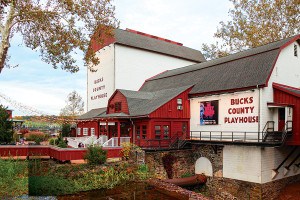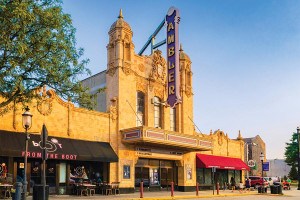Main Line Spotlight: Does Ardrossan Development Threaten Historic Sites?
On August 5, the Radnor Planning Commission had its first opportunity to hear about ES3 LP’s plans for the Ardrossan estate, the land immortalized in the play and film The Philadelphia Story. Edgar Scott III, the principal of ES3 and one of the heirs in control of the Montgomery-Scott-Wheeler family trust, was, at the time of the meeting, applying for a single density modification that would pave the way for him to develop the land.
Scott’s representative at the meeting told the commission he’s not aiming for more development on the land, necessarily; he’s not a builder. But he will sell lots–between 64 and 87 of which may be available should that modification get approved. He had drawn out various plans showing what the land might look like with development, and the details of those plans have become a hot topic for nearby residents.
Without question, there are significant changes that are likely to occur if 64 new properties are constructed. Neighbors have expressed concern about the construction work itself, with all its attendant noise and activity; and the impact of new residents’ cars–thus compelling the creation of two new roads. Now Scott has filed a second density modification application so he can develop “Wheeler Field.”
The modifications will likely be approved and development will come to Ardrossan. But one aspect that hasn’t been discussed in significant detail is the effect development may have on Ardrossan’s historical legacy–not circa The Philadelphia Story, but going back much further.
Phil Graham, a current board member of the Radnor Historical Society, is in the process of attempting to map out some areas of overall historical significance within the township–and within the boundaries of this controversial Ardrossan land. A few that he mentions are:
Old School House – On a map of 1848, a school house is shown on the south side of Norris Road (Goshen Road), so named for the Norris Estate just east of Newtown Township Line. Investigations in 1936 regarding this site cannot prove that there was a school so located. I believe it’s most recently been used as a scout hut.
Hickory Hall – Large federal style stone house built c.1840 by Levi Lewis II. Situated on the hill northwest of Holly Tree House and on Ardrossan. This house also exemplifies rural Radnor, is part of and commands a beautiful view. It has a large stone barn dating from approximately the same period, still used to this day to store hay and farm machinery. Hickory Hall is still occupied by the farm manager and his family.Holly Tree House – Small two-story stone house built c.1720 by Thomas Thomas. [Possibly the oldest house in the township.]Iddings Springhouse – Birthplace of Gen. Anthony Wayne’s mother


